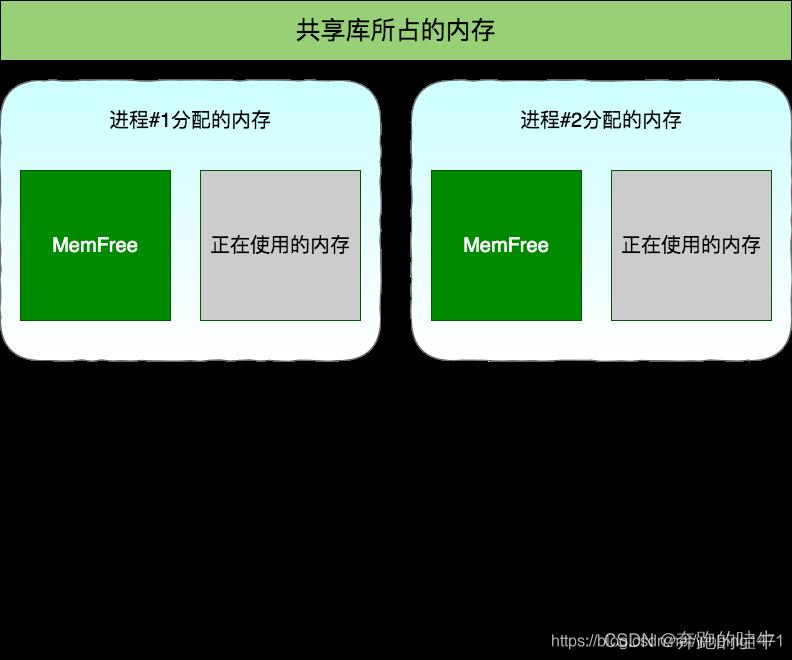Linux:VSSRSSPSS和USS的图解说明
Posted 奔跑的哇牛
tags:
篇首语:本文由小常识网(cha138.com)小编为大家整理,主要介绍了Linux:VSSRSSPSS和USS的图解说明相关的知识,希望对你有一定的参考价值。
最近在关注些linux内存资源相关数据,查到此资料,感觉介绍的很清晰,特转载以便后续查看。
转载出处:
https://blog.csdn.net/whbing1471/article/details/105523704
一、名词概念
一般来说内存占用大小有如下规律:VSS >= RSS >= PSS >= USS
VSS - Virtual Set Size 虚拟耗用内存(包含共享库占用的内存)
RSS - Resident Set Size 实际使用物理内存(包含共享库占用的内存)
PSS - Proportional Set Size 实际使用的物理内存(比例分配共享库占用的内存)
USS - Unique Set Size 进程独自占用的物理内存(不包含共享库占用的内存)
二、拼图解释

英文解释如下:
VSS (reported as VSZ from ps) is the total accessible address space of a process. This size also includes memory that may not be resident in RAM like mallocs that have been allocated but not written to. VSS is of very little use for determing real memory usage of a process.
RSS is the total memory actually held in RAM for a process. RSS can be misleading, because it reports the total all of the shared libraries that the process uses, even though a shared library is only loaded into memory once regardless of how many processes use it. RSS is not an accurate representation of the memory usage for a single process.
PSS differs from RSS in that it reports the proportional size of its shared libraries, i.e. if three processes all use a shared library that has 30 pages, that library will only contribute 10 pages to the PSS that is reported for each of the three processes. PSS is a very useful number because when the PSS for all processes in the system are summed together, that is a good representation for the total memory usage in the system. When a process is killed, the shared libraries that contributed to its PSS will be proportionally distributed to the PSS totals for the remaining processes still using that library. In this way PSS can be slightly misleading, because when a process is killed, PSS does not accurately represent the memory returned to the overall system.
USS is the total private memory for a process, i.e. that memory that is completely unique to that process. USS is an extremely useful number because it indicates the true incremental cost of running a particular process. When a process is killed, the USS is the total memory that is actually returned to the system. USS is the best number to watch when initially suspicious of memory leaks in a process.
————————————————
版权声明:本文为CSDN博主「coldice0521」的原创文章,遵循CC 4.0 BY-SA版权协议,转载请附上原文出处链接及本声明。
原文链接:https://blog.csdn.net/whbing1471/article/details/105523704
以上是关于Linux:VSSRSSPSS和USS的图解说明的主要内容,如果未能解决你的问题,请参考以下文章
Linux内存管理 一个进程究竟占用多少空间?-VSS/RSS/PSS/USS